If you’re pondering what to wear in Sumatra, then you’re not the only one. Whether your trip is in its early planning stages or you’re almost ready to land in Indonesia, your Sumatra packing list is one of the most important things to get right.
Firstly, congratulations: it won’t be long until you’re tracking down orangutans, scaling active volcanoes, surfing pointbreaks, and relaxing at the world’s largest crater lake.
When it comes to offbeat travel destinations in Indonesia, Sumatra is one of the most challenging but one of the most rewarding places to visit in Indonesia. It’s barely explored compared to Bali; during my time in West Sumatra, meeting another foreigner was a once or twice daily experience.
It’s likely that you have a number of questions about what to wear in Sumatra and what to pack for Sumatra: Is the dress code different in North Sumatra compared to West Sumatra? Can I use the same packing list for Java or Bali? Can I wear a bikini or swimming shorts at Lake Toba?
Having been backpacking in Sumatra in March 2023, across both North and West Sumatra, I can answer all of your questions from first-hand experience.
In Sumatra, you can’t use the same packing list you’d use for Bali. Your Sumatra packing list will be significantly more conservative because, unlike Bali, Sumatra is a predominantly conservative Muslim country – with the exception of just a few Christian enclaves such as Lake Toba.
Check out my full Sumatra backpacking itinerary for an in-depth guide to north and west Sumatra.
Disclosure: This post includes affiliate links. If you decide to click through and make a qualifying purchase, I will receive a small commission at no extra cost to you – thanks for your support.
What to Wear in Sumatra: Where is Sumatra?
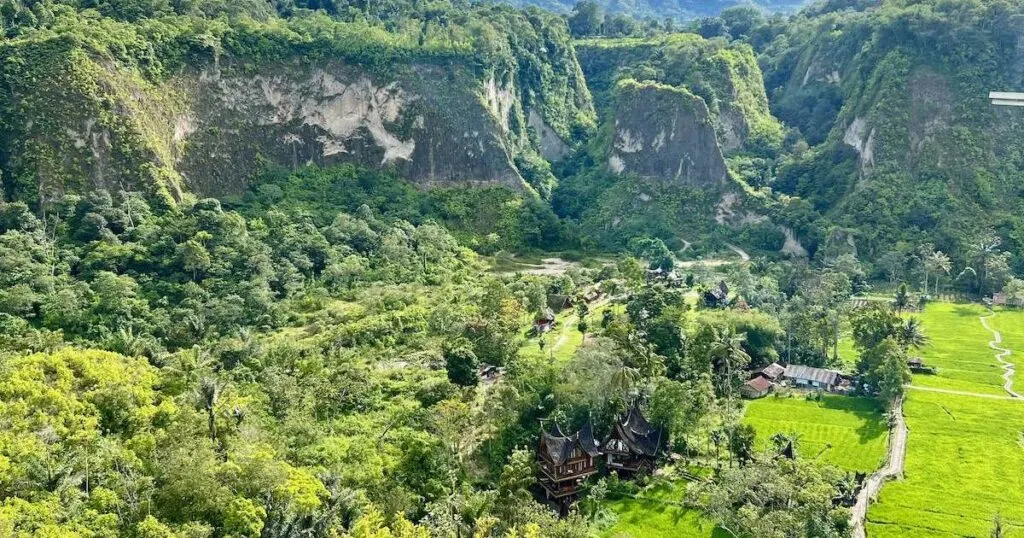
Sianok Canyon in Bukittinggi, West Sumatra
Indonesia, the largest archipelago in the world has five main islands and 18,110 small islands and islets. Sumatra is the largest of them all; in fact, it’s the sixth-largest island in the world.
Located in the western part of Indonesia in southeast Asia, it is situated to the east of mainland Malaysia and north of the Indonesian island of Java. Ferry connections run from Sumatra to Malaysia and Java.

SUMATRA CHEAT SHEET
Book your flights direct with AirAsia – my favourite money-saving hack.
Book accommodation on Booking.com or directly through WhatsApp (for homestays).
Find a tour or experience locally, and check Get Your Guide.
What to Wear in Sumatra: What is the climate in Sumatra?
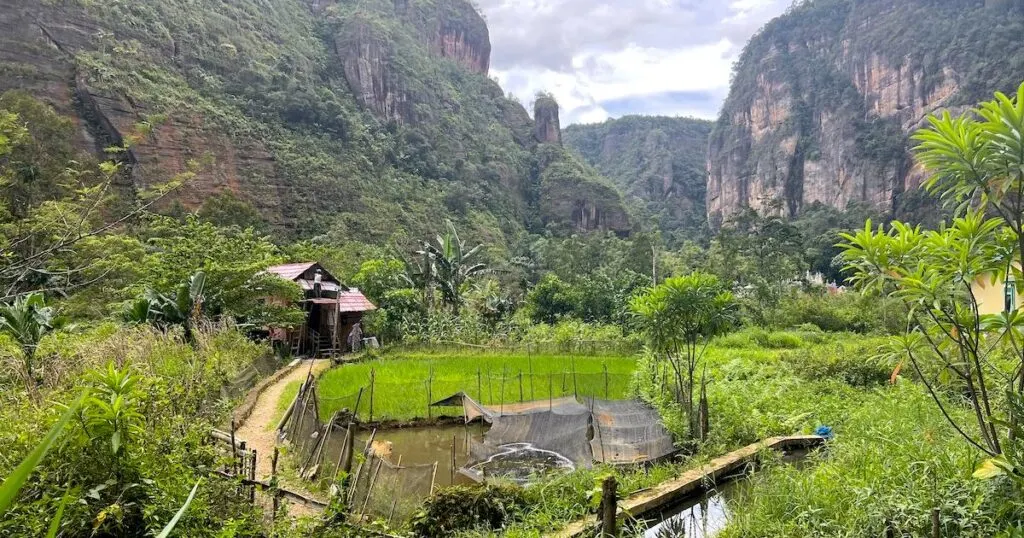
Harau Valley, West Sumatra
Sumatra has a tropical climate, but out of all of the islands of Indonesia, it’s the coldest. That doesn’t mean that it’s cold in the Western sense, however; the average temperature in Sumatra is 32 °C (90 °F). Conditions are humid and hot. These conditions also stay fairly constant all year round.
The temperature also depends upon your destination’s altitude. There are lots of highlands in Sumatra, where the temperature is more moderate (between 20 and 28 °C depending upon the exact elevation and weather conditions).
There are two main seasons in Sumatra: the dry season (between February and August) and the wet season (between September and January). There is also a burning season, which you will want to avoid if you want clear views.
Also note that Ramadan happens once per year – in 2024, it runs between the 10th March and the 9th April. During this time, restaurants will be closed during daylight hours. While most tourist homestays will provide you with food, it is difficult to find substantial food during outings, unless you are travelling in Christian areas such as Lake Toba.
Dry Season: February to August
Average temperature: 32°C
The temperature in Sumatra during the dry season averages around 32 °C. There are approximately 12 hours of daylight.
April through to June is typically the best time to visit Sumatra because the weather is hot, dry and humid. While rainstorms are still frequent due to the tropical climate, they pass over fairly quickly and don’t tend to interrupt travel plans significantly.
I visited Sumatra in early to mid April 2023. The weather was consistently hot, humid, and sunny. There were occasional downpours, often for one day or one afternoon. I also had to change my travel plans once (skipping the Mentawai Islands) due to rain interrupting the ferry schedule and being limited on time for the trip.
Burning season
Between June and October, the air quality in Sumatra declines because it is burning season. During this time, farmers slash and burn old crops, creating a haze which hangs over the country.
The haze actually spreads across Southeast Asia, particularly to Kuala Lumpur and Singapore. The haze is at its worst between July and September.
During this time, the views in Sumatra will be less impressive. You may also notice that you experience symptoms resembling asthma. In many countries, residents are told to stay indoors during burning season due to the potential of negative health side effects.
It’s up to you whether you visit during burning season, but I would personally avoid it if possible.
Wet Season: September to January
Average temperature: 30°C
The temperature in Sumatra during the wet season averages around 30°C. There are approximately 12 hours of daylight.
Between September and November, wet season begins with heavy monsoon rainstorms, which may cause disruptions to the public transport in Sumatra. North Sumatra’s monsoon season starts in September, while southern Sumatra’s monsoon season begins in October.
Mosquito-borne illnesses such as malaria are most prevalent in Sumatra during the wet season. Therefore, it is very important to pack preventive measures such as mosquito repellent and mosquito coils, as well as anti-malaria tablets if necessary.
During the wet season, flooding may occur in the national parks and forests, making activities such as hiking and jungle trekking more dangerous. There are also more leeches.
What to Wear in Sumatra: How to Prepare for Visiting Sumatra
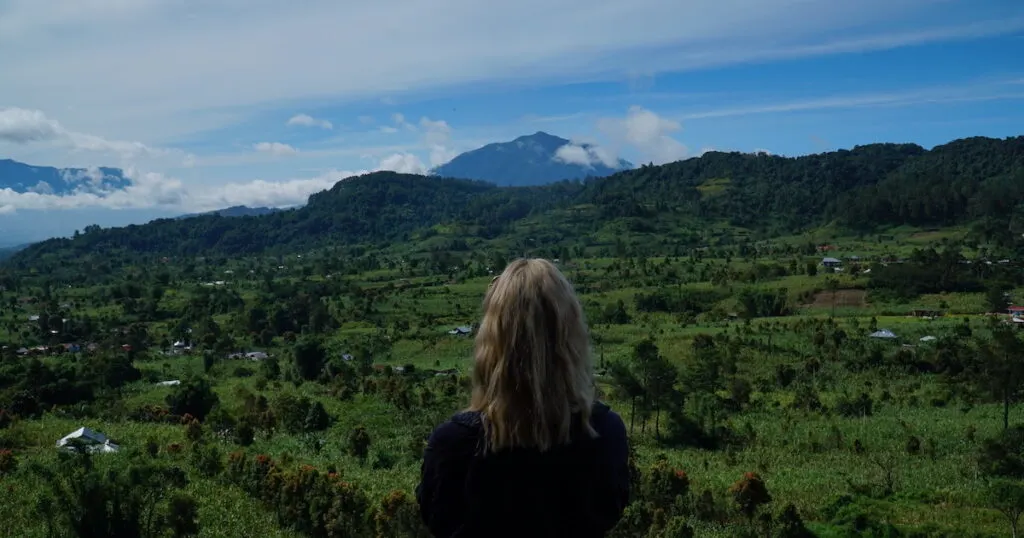
1. Visit Sumatra during the dry season between March and June.
To avoid any heavy rains, Sumatra’s burning season, and Ramadan, the best time to visit Sumatra is between April and June . Heavy rains will otherwise disrupt your travel plans and outdoor activities such as trekking to see orangutans, hiking or going to the beach. The scenery in Sumatra is also one of the best parts about the island; burning season will fog up some of the best views.
2. Book your transport to Sumatra early.
To reach Sumatra, there are several modes of transport
The first option is to fly to Medan in north Sumatra. If this is your plan, you should book your flights as early as possible using a combination of Skyscanner and Google Flights to find the cheapest flights.
The second option is to take a ferry.
Ferries run between Port Dickson or Malacca in Malaysia and Dumai in east Sumatra. You can book the ferry in person at your chosen Malaysian port. The company is called the Indomal Fast Ferry. I took this option, because I had recently had ear surgery in Kuala Lumpur and was returning to and from Malaysia, where I was based from February 2023 to July 2023.
In this case, you will arrive via the port in Dumai. From there, you need to ask for a taxi to the bus station (first stopping at an ATM and a local tourist SIM card shop), where you can book an overnight bus to either west Sumatra or north Sumatra.
Ferries also run between south Sumatra and the northern tip of Java. To reach the north of Java and the port in Merak, you can take a bus or a train from Jakarta. Once you arrive in Sumatra, either explore south Sumatra or take a night bus to west Sumatra.
3. Decide your route through Sumatra.
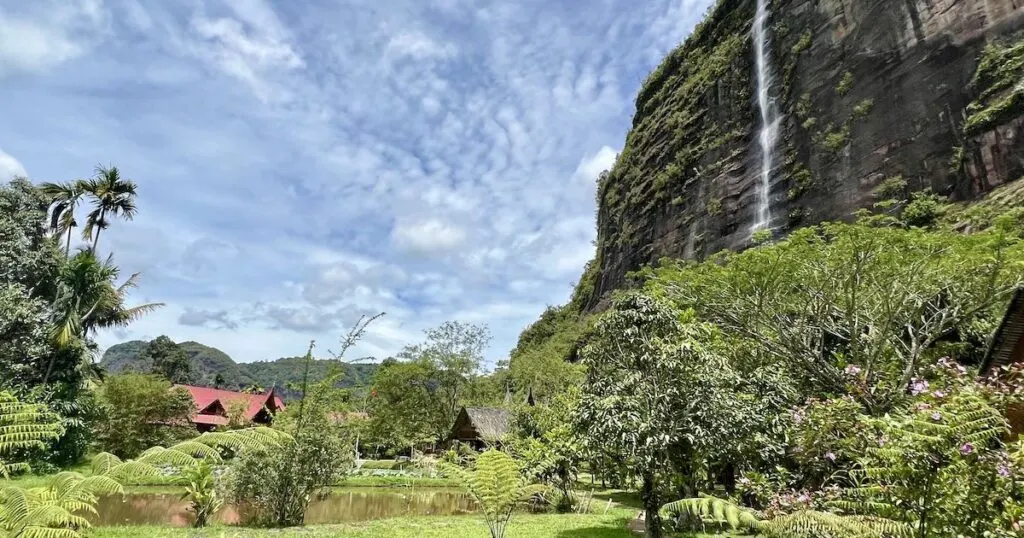
Abdi Homestay in Harau Valley, West Sumatra
Your route through Sumatra is vitally important (just as important as knowing what to wear in Sumatra, yes). Where you start will depend on how you arrived in Sumatra. While most people arrive in Medan and trace their way through north Sumatra and onto west Sumatra, if you’re arriving by ferry in Dumai or south Sumatra, you might want to do the route backwards.
For example, I started in Dumai, took an overnight bus to Padang in west Sumatra, and worked my way northwards.
Getting to west Sumatra from north Sumatra requires an overnight bus – and if you’re returning home via the airport in Medan, it will require a return overnight bus too. Therefore, many tourists in Sumatra decide not to visit west Sumatra.
This is a huge shame. West Sumatra is my favourite part of Sumatra. It has peaceful valleys and canyons. There’s a smaller, more intimate alternative to Lake Toba – Maninjau Lake – as well as jungle or volcano trekking activities.
There’s also access to the Mentawai Islands from Padang, which are one of the best surfing destinations in Indonesia (and in fact, Asia), and where you can visit a tribe in the jungle.
I have covered a range of the best itineraries for 5 days to one month for north and/or west Sumatra in my full Sumatra backpacking itinerary.
Here’s a brief overview of some of the best destinations in Sumatra:
- Medan: Brief cultural visit.
- Bukit Lawang: Orangutan trekking.
- Berastagi: Volcano hike.
- Lake Toba (Samosir Island): Relaxation and swimming.
- Bukittinggi: Japanese underground tunnels, a canyon hike, and west Sumatra culture and cuisine.
- Lake Maninjau: A lake surrounded by rice terraces, ideal for cycling and relaxing.
- Harau Valley: Hiking and waterfalls.
- Padang: The gateway to the Mentawai Islands, with a Chinatown.
- Mentawai Islands: Surfing, tribe culture, and relaxation.
4. Buy a tourist SIM card at the airport or port, or purchase an E-Sim.
Wi-Fi access is generally good in Sumatra. Guesthouses and hotels have a stable Wi-Fi connection. At least, I never had too much trouble connecting, and I was able to complete freelance work deadlines with no issues in Padang, Harau Valley, and Lake Toba.
If you want to access 3G or 4G, which I would suggest you do if you’re exploring without a guide, you need to buy a tourist SIM card – a tourist SIM card, NOT a local SIM card.
Having travelled to Bali and visited Jakarta, I expected it would be easy to find a local SIM card to access the internet. However, after much trial and error, I found out that in Sumatra, local SIM cards are only compatible with phones purchased in Sumatra.
You must buy a tourist SIM card. At the moment, the tourist SIM cards are sold in very few places. You can buy them in Medan airport. If you’re arriving by ferry, you can ask your taxi driver to take you to a place to buy a tourist SIM card; there should be at least one designated place in the ferry port towns.
Another option is to buy an E-Sim for Indonesia, which is what I did after missing my chance in Dumai. The E-Sim didn’t work in many parts of West Sumatra but worked well in North Sumatra. My friend, who I was travelling with, purchased the same E-Sim. His worked on and off in West Sumatra and barely worked in North Sumatra. Use an E-Sim only as a last option.
Buy an E-Sim for Sumatra here.
5. Book your accommodation while travelling.
I wouldn’t recommend booking your accommodation too far in advance in Sumatra because your travel plans in Sumatra can easily be disrupted. There may be delays on roads due to weather conditions, traffic, or road blockages.
Since 4G access is so unreliable, I would suggest that you always book your accommodation in your next destination using Wi-Fi before you depart by bus or taxi. You never know when your next internet connection will be. If you have no plan when you arrive, you might get stuck or overpay for accommodation out of desperation.
The best place to book your accommodation in Sumatra is Booking.com. Hostels are yet to become a big thing in Sumatra because the island doesn’t get many backpackers or tourists. Therefore, there are only a few legit hostels listed on Hostelworld.
Booking.com lists guesthouses, hostels, homestays, and hotels. Sometimes, you will need to book accommodation by Whatsapp. This is the case for many popular accommodations designed for foreigners in west Sumatra.
What to Wear in Sumatra
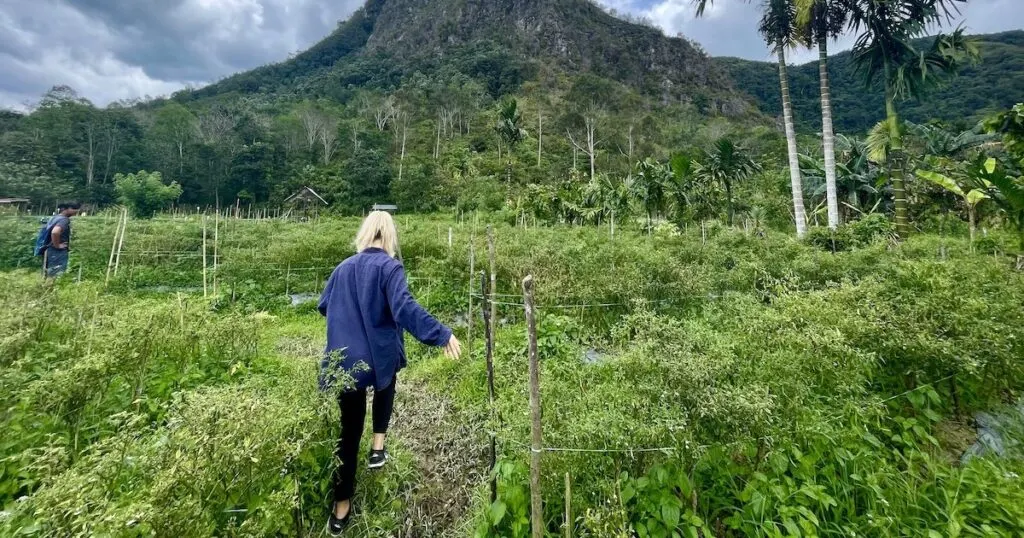
I’m going to simplify what to wear in Sumatra into four simple points:
Cultural expectations: Sumatra is a predominantly strict Muslim country. West Sumatra’s population is 99% Muslim. There are Christian enclaves in north Sumatra, mainly at Lake Toba (among the Batak Toba, Karo and Pakpak groups) and the Nias Islands (95% Christian population).
In these enclaves, it is more acceptable to reveal your shoulders, chest and knees, as well as to wear a swimsuit, swimshorts, or bikini. However, in the rest of Sumatra, you need to dress modestly to avoid offending locals and attracting unwanted attention.
Climate: The climate in Sumatra is tropical: hot and humid. Therefore, you will sweat quickly and feel sticky. It’s important to wear quick-drying, breathable clothes. Linen, cotton and quick-dry sports materials are ideal in this kind of climate.
As you’ll be dressing conservatively, you will also want to wear clothes that don’t stick to your skin. Baggy and loose-fitting wide-legged trousers, skirts, blouses, and shirts are ideal for this.
Activities: In Sumatra, it’s likely that you’re going to be partaking in hiking activities, whether it’s in the jungle, scaling a volcano, or hiking around a lake or valley. While it may be tempting to try and wear tight-fitting sportswear or to expose your arms, this is the exact moment you should be doing the opposite.
In the jungle, there are huge mosquitos which WILL bite you through tight-fitting clothing. Loose, long-sleeved clothing coated in mosquito repellent are essential if you don’t want to emerge with bites all over your body.
Weather: Sumatra has a tropical climate, so even when it’s hot and sunny during the dry season, you can expect a tropical downpour. You should carry a lightweight waterproof coat or plastic coat and check the weather forecast regularly.
What to Wear in Sumatra: Outfit Ideas
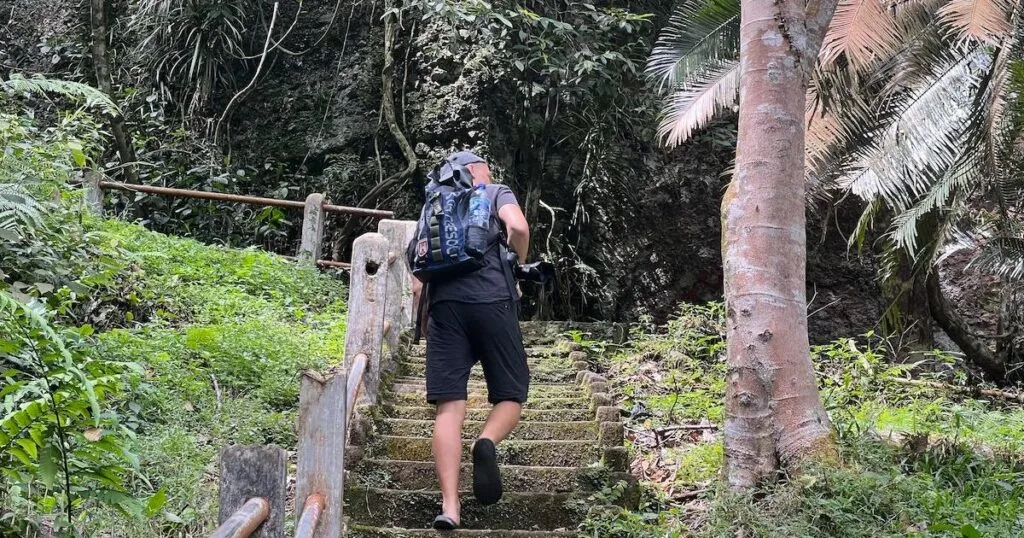
First things first, I want to make it clear that I have seen tourists wearing shorts, crop tops, and tight-fitting clothes in Sumatra, even in Muslim areas. However, on every occasion, I also noticed that local people looked and acted uncomfortable. They gave tourists a wide berth and didn’t interact with them.
On the other hand, when tourists dressed respectively, locals were in general extremely friendly, willing to help. I had several people express to me how thankful they were that I’d dressed accordingly to their culture and religion.
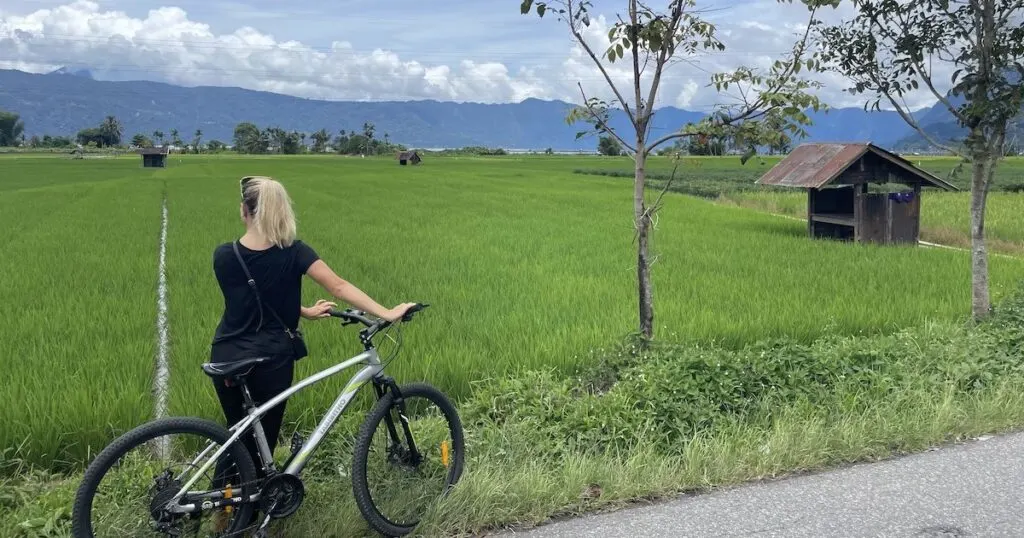
I would highly recommend dressing conservatively. It is the simplest and quickest way to show that you respect the beliefs of the people who live in Sumatra. On the practical side of things, if you’re a woman, it also helps to protect you from unwanted stares or attention – while this is rare, it can happen anywhere.
You don’t need to wear a headscarf if you’re a woman, as not all women in Sumatra wear the hijab. In general, locals don’t expect female tourists to cover their head using a headscarf, as in other strict Muslim countries.
If you’re choosing to dress modestly, these are the main principles you should follow when choosing what to wear in Sumatra:
- Cover the shoulders, chest, and knees: These are the main rules to follow when dressing conservatively in Sumatra. Backless tops or dresses should also be avoided if possible.
- Avoid see-through clothing: Lighting can change how see-through a material is, as does bending over. Thoroughly check that your clothes are not see-through before travelling.
- Don’t wear tight-fitting clothing like leggings, unless your hips/behind are covered by a baggy top.
- If in doubt, copy the locals: If you’re not sure what to wear, just look at what the locals are wearing. If women are wearing short sleeves and long trousers, that’s a good idea. If the men are wearing shorts, then you should be okay doing that too.
Outfit for Women in Sumatra
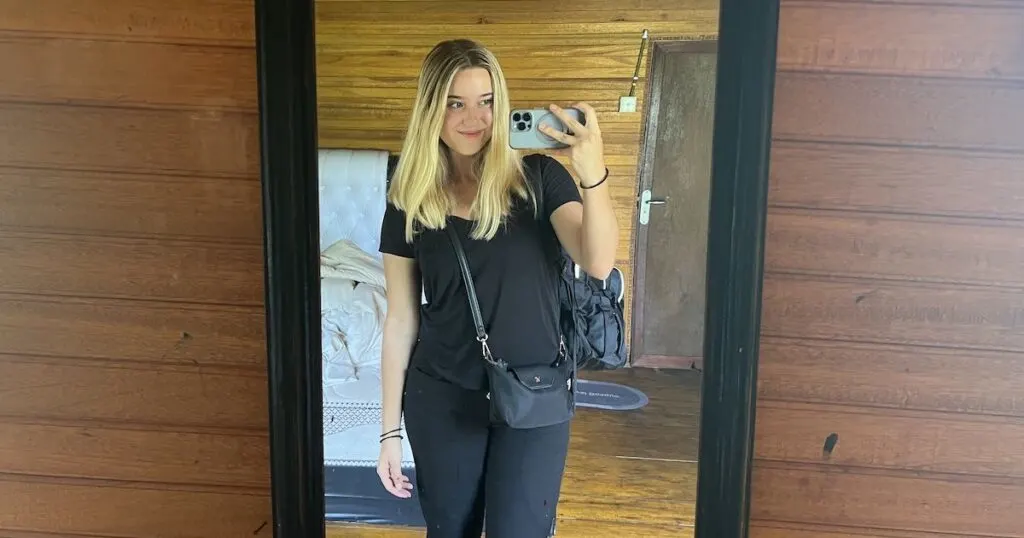
My go-to outfit in west Sumatra: Linen trousers and a cotton t-shirt.
- Lightweight trousers and a cotton t-shirt (covering the shoulders).
- T-shirt blouse and trousers.
- Full-length vest top, long-sleeve blouse, and trousers or a maxi skirt.
- Maxi-length t-shirt dress.
- Below-the-knees skirt and a lightweight t-shirt blouse.
Outfit for Men in Sumatra
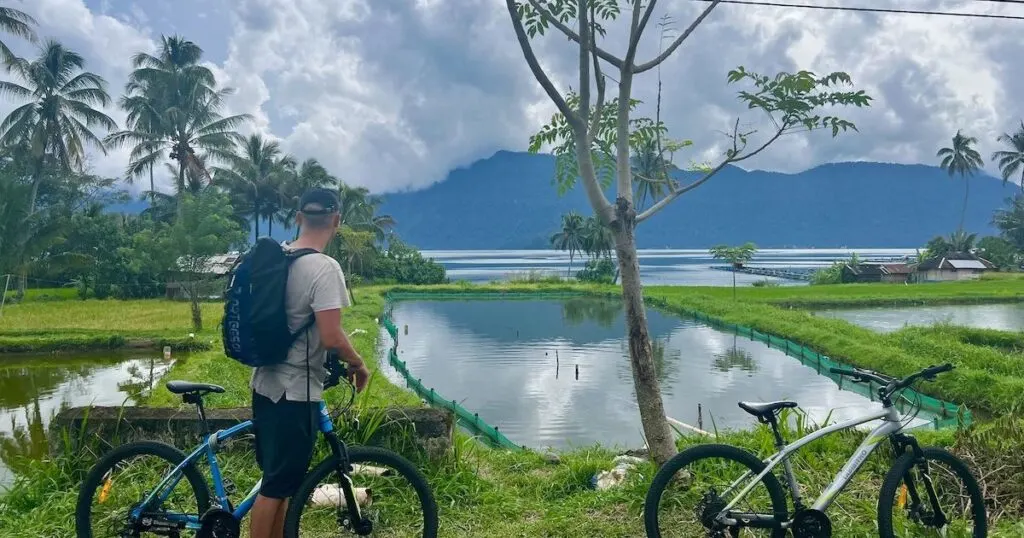
- Lightweight tracksuits and a t-shirt.
- A loose shirt and linen trousers.
- Loose shorts (covering the majority of the thighs) and a t-shirt.
What to Wear in North Sumatra
North Sumatra is predominantly Muslim. You should dress conservatively, covering the knees (for women), chest, and shoulders at all times. However, there are Christian enclaves, where it is acceptable to dress slightly less conservatively.
What to Wear in Lake Toba
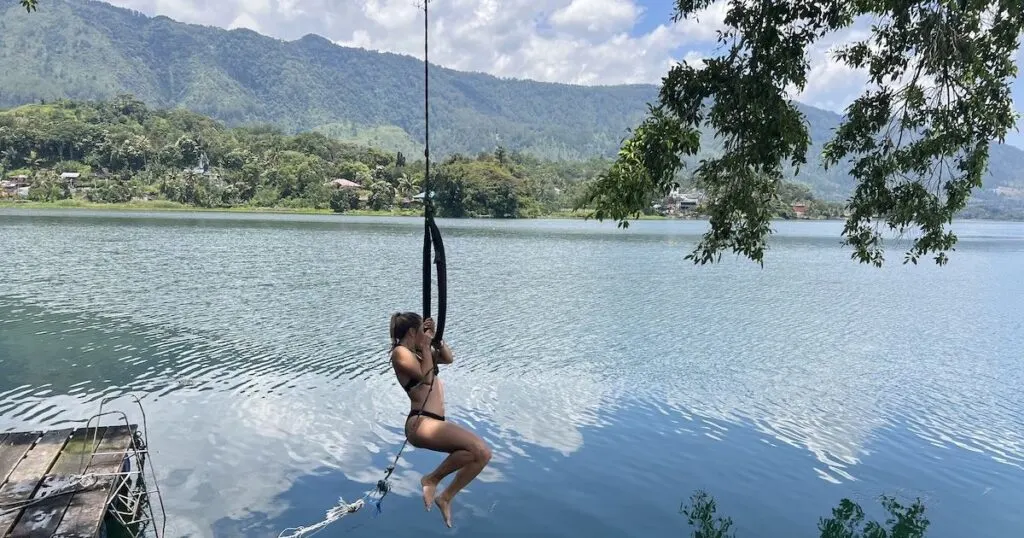
Swinging on a tyre swing at Reggae Guesthouse on Samosir Island in Lake Toba
Lake Toba is a predominantly Christian area. It is also one of the most touristic parts of Sumatra, as the largest volcanic crater lake in the world. It is common for tourists to wear a bikini, swim shorts, or a swimming costume to swim in the lake, and locals don’t bat an eye. Most of the time, tourists swim in the lake from their accommodation, anyway.
The Christian community at Lake Toba practises dressing modestly, but it is not as strict. It is more acceptable to expose your shoulders or wear skirts slightly above the knees. You can more comfortably wear jeans and a vest top, or shorts and a t-shirt, in Lake Toba.
What to Wear for Jungle Trekking in Bukit Lawang

Your main challenge when going jungle trekking in Bukit Lawang is mosquitos. Long trousers and a long-sleeved top coated in mosquito repellent are essential. While it may be tempting to wear a t-shirt, you will only emerge with mosquito bites.
Sturdy hiking boots or good trainers are a must because the jungle has uneven surfaces, mud, and streams. Wear long socks to cover any exposed skin around the ankles because there are leeches in the jungle.
Travel insurance is essential for any trip abroad. If you’re in an accident or experience an emergency, you need adequate cover. I recommend Staysure for single or multiple trips per year and SafetyWing for digital nomads.
What to Wear in West Sumatra
What to Wear in Bukittinggi
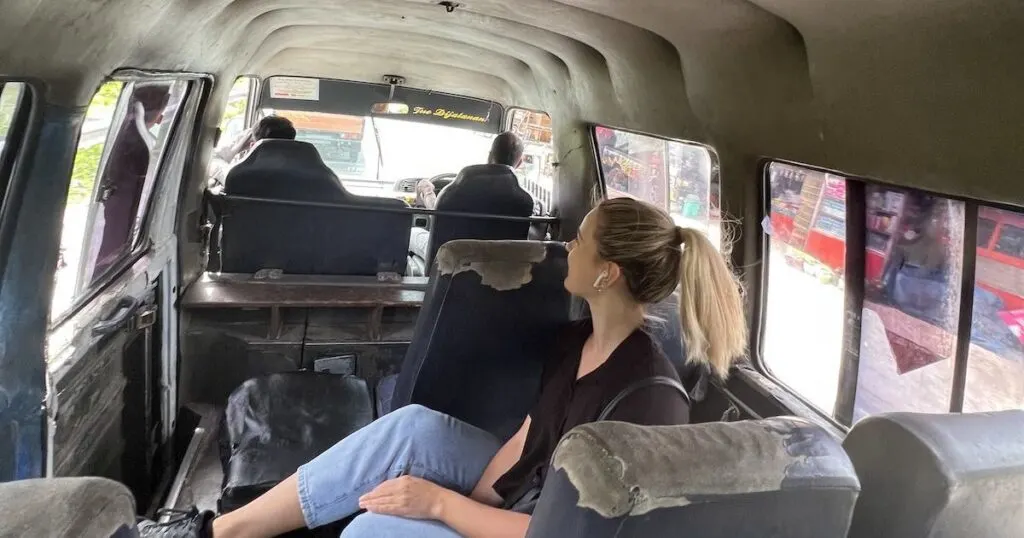
Bukittinggi is a very conservative Muslim town. You should be careful to dress modestly and cover your knees, shoulders and chest at all times.
What to Wear in Harau Valley
While it may be tempting to wear less clothes in Harau when you’re hiking, you should remember that the area is still very conservative. You will need to cover your knees, shoulders, and chest.
At Abdi Homestay, my favourite homestay, I felt more comfortable to dress slightly more ‘Western’. For example, I wore a dress slightly above my knees and once or twice, I wore crop top. Still, the homestay has visitors, and I caught a visitor taking photographs of me when I had my shoulders exposed.
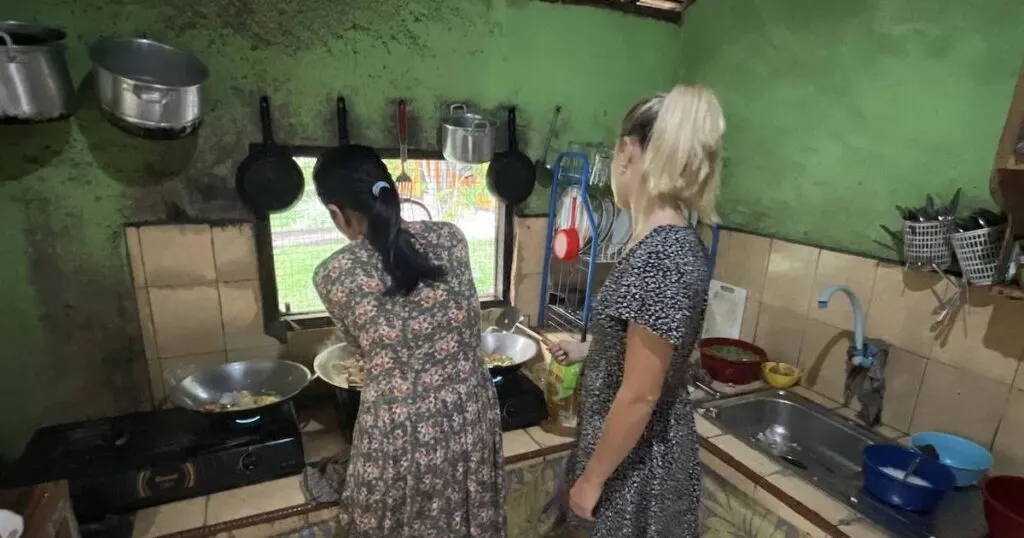
What to Wear in Lake Maninjau
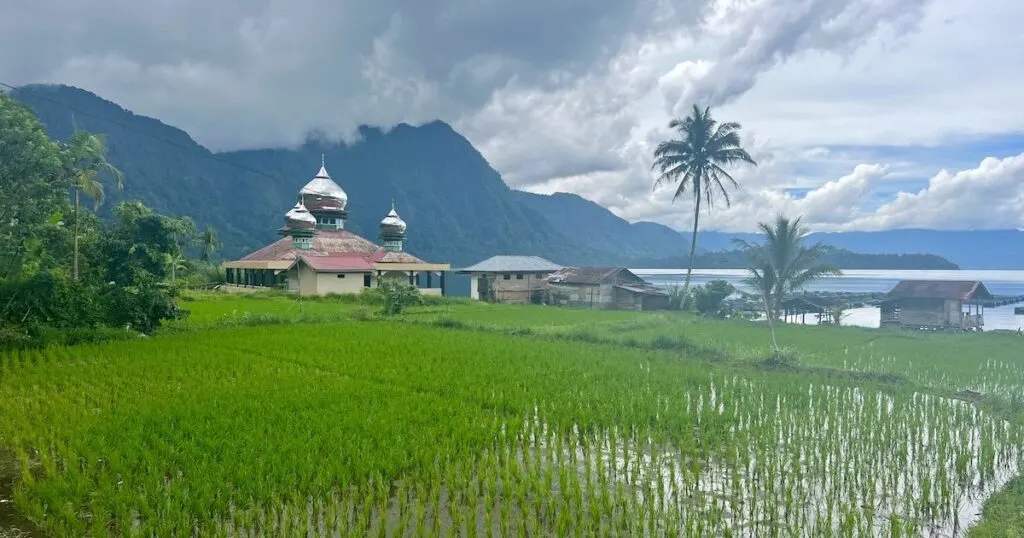
Lake Maninjau is a conservative Muslim area. You should cover your knees, shoulders and chest at all times, even if you’re cycling around the Lake.
What to Wear in the Mentawai Islands
The Mentawai Islands are not predominantly Muslim, although there are small Muslim and Christian communities on the islands. The predominant religion is animism, an indigenous religion concerned with the belief that all humans, animals, natural objects, and geographic features (such as volcanoes) are inhabited by a spirit. The tribe’s traditional wear is also a simple loin cloth.
This, combined with the fact that the islands are visited by surfers who wear bikinis and swimming shorts freely, means that you don’t necessarily need to dress conservatively on the islands. You should feel quite comfortable exposing your shoulders and knees and wearing a bikini, swim shorts or a swimsuit in the ocean and on the beaches.
What to Wear in Sumatra: Sumatra Packing List
How to find mosquito repellent in Sumatra
The most important thing you must include in your Sumatra packing list is mosquito repellent. Malaria is carried by mosquitoes in Sumatra.
I ran out of mosquito repellent early into my trip in Sumatra, thinking that it would be easy to find. Then, I spent three days struggling to find mosquito repellent, even in large supermarkets and pharmacies; they only sold mosquito coils and insect killer not suitable for the skin. Shop workers and pharmacists had little understanding of where to find mosquito repellent suitable for applying to the skin.
The following image shows the best mosquito repellant in Sumatra, Autan. I found it in a large supermarket in Payakumbuh, the town nearest to the Harau Valley. It comes in a spray and cream formula. Both formulas worked well on skin and clothes, and lasted overnight.
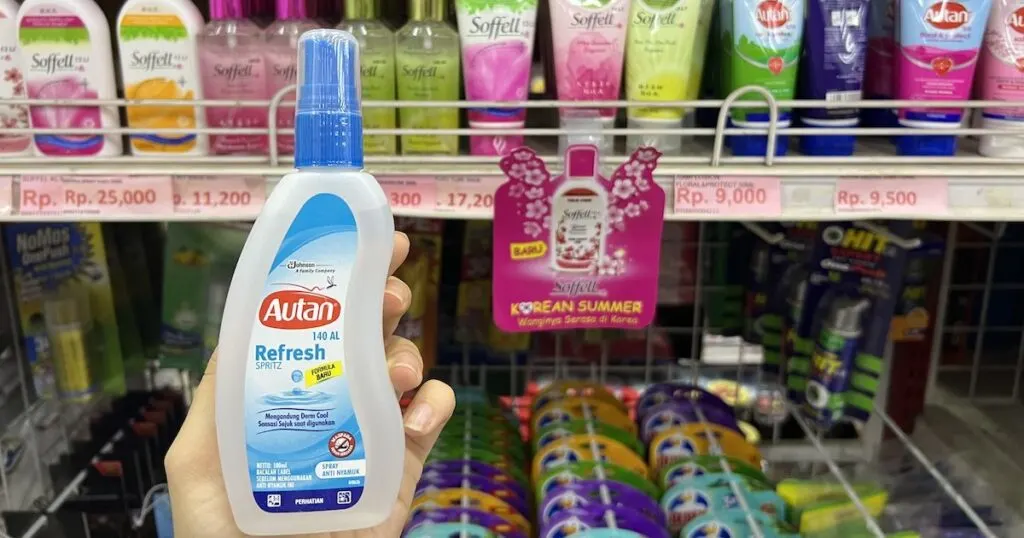
Fragranced mosquito repellent sachets are also sold in some basic market pharmacies but I found them to be ineffective against mosquito bites.
When you’re choosing what to wear in Sumatra, apply a coat of mosquito repellent to your clothes too.
What not to pack for Sumatra
Forget what to wear in Sumatra; you also need to know what not to wear. Simply put, you don’t need to bring your vests, shorts, crop tops, mini dresses, or other revealing items to Sumatra. A few less conservative items will suffice, for use when you’re visiting Lake Toba or the Mentawai Islands, for example.
You can also leave behind your night-out outfits. This is a Muslim country, where bars and nightclubs are not a thing. And whatever you do, do not wear t-shirts depicting pornographic material or slogans/images that would be considered offensive in a predominantly Muslim country.
Clothing
- Lightweight t-shirts, shirts or blouses covering the shoulder and chest, including lots of spares.
- Maxi dress(es) which cover the shoulders and shoulders
- Long, breathable trousers or skirts covering the knees- multiple pairs are ideal.
- Lightweight, breathable jackets or cardigans.
- Swimwear.
- Socks.
- Underwear and bras.
- Jewellery and/or watch.
Shoes
- Flip-flops or sandals.
- Sturdy trainers or hiking shoes.
- Reef shoes.
Bags
- Day backpack.
- Small over-the-shoulder bag for valuables
- Dry bag (optional for Mentawai Islands or other coastal destinations).
- Large backpack (uneven terrain may be difficult for suitcase holders).
Toiletries
- Face wash.
- Shower gel.
- Shower poof or scrubber.
- Razors and razor cream.
- Shampoo and conditioner.
- Moisturiser.
- Deodrant.
- Body spray or perfume.
- Tweezers.
- Nail clippers or scissors.
- Hair brush or comb.
- Hair bobbles and clips.
Miscellaneous
- A lightweight beach towel (ideally microfibre for its quick-drying effect).
- Sunglasses.
- Sun cream.
- Mosquito repellent.
- Mosquito coils (optional – these are sold widely in Sumatra)
- Padlocks for bags and hostel or guest room lockers.
- Tissues and/or toilet paper.
- Snacks.
- Spork and tupperware for snacks or leftover meals (especially if you’re travelling during Ramadan).
- Small torch and batteries.
- Ear plugs: The call for prayer sounds early in the morning.
- Eye cover.
- Laundry detergent powder: You’re going to sweat a lot. Inbetween laundry loads, laundry detergent powder is useful to wash clothes in the sink or a bucket.
- A reusable water bottle.
- Surfing gear (optional), including rash guards, a surfboard, reef shoes, and wax.
- Book or kindle.
- Travel journal. If you’re new to journalling, I have a full travel journaling guide, which explains how to write a travel journal from scratch.
First-aid kit
- Waterproof plasters.
- Blister plasters.
- Bandages and surgical tape.
- Immodium for traveler’s diarhhea.
- Rehydration sachets
- Anti-allergy tablets.
- Antiseptic wipes.
- Antibacterial cream such as Savlon.
- Painkillers like Paracetamol or Ibuprofen.
- Mosquito relief cream or hoe hin.
- Anti-acids.
- Anti-sickness tablets for motion sickness.
- Anti-malaria pills, if recommended by your doctor.
Valuables
- Any prescription medicine, accompanied by a doctor’s letter.
- Passport.
- Tourist visa (or other suitable visa).
- Travel insurance documents. I recommend using Staysure or Safety Wing travel insurance.
- Mobile phone.
- Phone charger.
- Laptop and laptop charger (if required).
- Ear phones.
- Plug adaptor. Plug sockets in Sumatra require a Type C plug, which is the plug type used in the majority of destinations in mainland Europe. It has two round prongs.
- Camera, including a memory card and camera charger.
- Power bank.
- ID card.
- Wallet with cash and a debit or credit card. Sumatra is a predominantly cash-only country. There are good numbers of ATMs in towns and cities, as well as around petrol stations, but you may have to travel from remote destinations. A travel card such as Monzo or Revolut lets you withdraw a certain amount of money without charging international handling fees.
Tourists in Indonesia should dress conservatively by covering the knees, shoulders and chest because Indonesia is a predominantly Muslim country. In Bali, tourists don’t need to cover up.
While you can wear shorts in Bali, wearing shorts on predominantly Muslim islands such as Sumatra or Java is less advisable. If you wear shorts, they should be below the knee. Men can wear shorts that don’t show the majority of the thigh.
AUTHOR
Katie Treharne
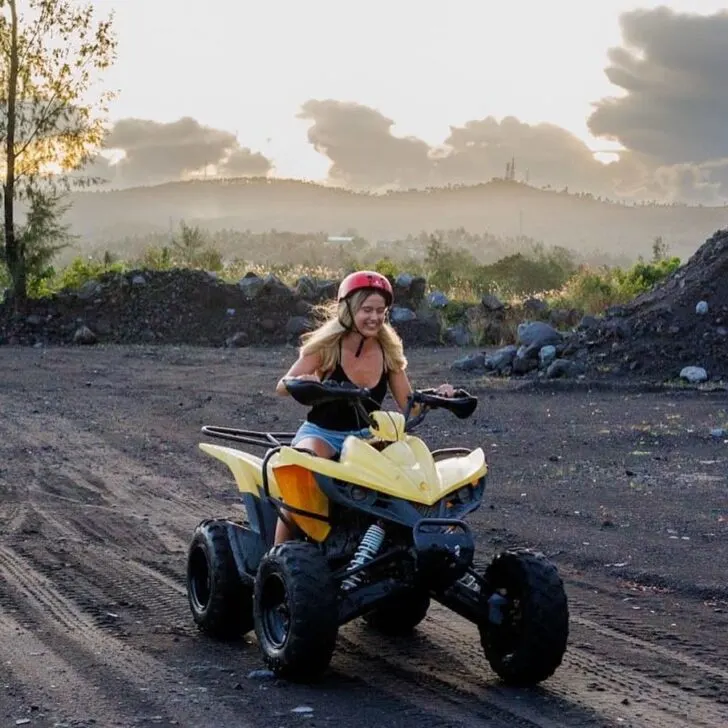
I’m Katie, the owner of Escape Artist Katie. I have been travel writing since 2018, including writing for luxury travel magazines and publications such as Wanderlust.
As well as being a digital nomad who works and lives abroad permanently, I’m a big advocate for offbeat travel and pushing yourself out of your comfort zone.
I hope you found my article useful – find out more about me here or keep up with my travels on Instagram.

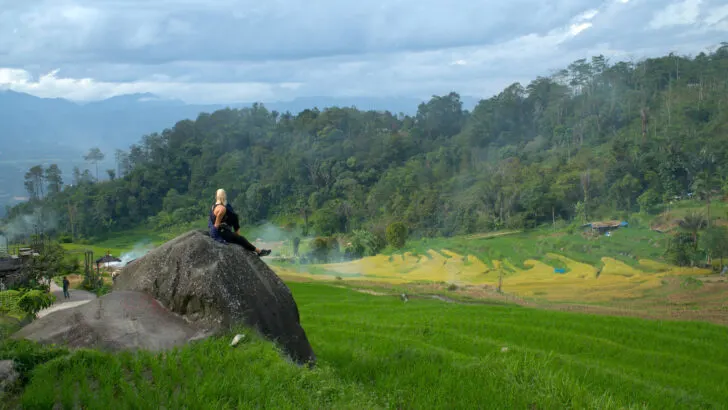
Siddharth (bucketlistsid)
Thursday 15th of June 2023
Beautiful read Kaite! Took me like 10 mins or more to be able to grasp everything and mind-mapping everything up! Super detailed and cannot wait to visit Sumatra.